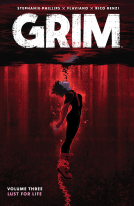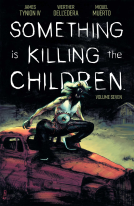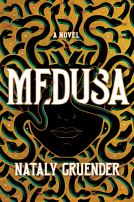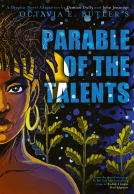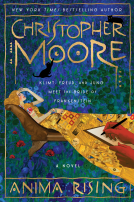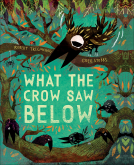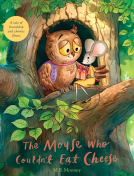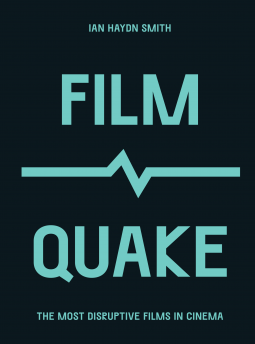
FilmQuake
The Most Disruptive Films in Cinema
by Ian Haydn Smith
This title was previously available on NetGalley and is now archived.
Send NetGalley books directly to your Kindle or Kindle app
1
To read on a Kindle or Kindle app, please add kindle@netgalley.com as an approved email address to receive files in your Amazon account. Click here for step-by-step instructions.
2
Also find your Kindle email address within your Amazon account, and enter it here.
Pub Date Jan 25 2022 | Archive Date Dec 21 2021
Quarto Publishing Group – White Lion | Frances Lincoln
Talking about this book? Use #FilmQuake #NetGalley. More hashtag tips!
Description
FilmQuake introduces 50 movies that shook the cinematic world, telling the fascinating stories behind their creation, reception and legacy.
From unbelievable developments in technology (Citizen Kane, 1941) to feminist triumphs (Wanda, 1970); films that kickstarted New Queer Cinema (Paris is Burning, 1990) to others that challenged lawmakers (A Short Film About Killing, 1988) – FilmQuake presents the movies that questioned boundaries, challenged the status quo and made shockwaves we are still feeling today.
From film's first innovators, people like the Lumière brothers, whose short film of a train arriving was reported to have terrified audiences in 19th century Paris, through iconoclasts like Sergei Eisenstein and Luis Buñuel, to titans of 20th century cinema like Alfred Hitchcock and Jean-Luc Godard, discover the stories behind the films which incontrovertably changed the course of cinema forever.
Into the modern day, this book examines how filmmakers have addressed themes of prejudice and inequality, from the Black Lives Matter movement and Jordan Peele's unmissable Get Out to Bong Joon-ho's cutting study of the lives of the wealthy in Parasite, as well as innovative new cinematic techniques emerging in films like 28 Days Later and Blair Witch Project.
In telling the history of cinema through the works that were truly disruptive, and explaining the context in which each was created, FilmQuake demonstrates the heart of modern film, which is to constantly question boundaries and challenge expectation.
This book is from the Culture Quake series, which looks into iconic moments of culture which truly created paradigm shifts in their respective fields.
Also available is ArtQuake, which tells the stories of 50 pivotal works that challenged consensus and broke daring new ground in the world of art, inspiring shock and scandal as they did so, but ultimately cementing themselves as truly great works of modern art.
Available Editions
| EDITION | Other Format |
| ISBN | 9780711259713 |
| PRICE | $16.99 (USD) |
| PAGES | 208 |
Featured Reviews
Haydn Smith takes us on a cinema trip through film history with fifty films that shook the world… An enthralling examination of those worldwide films and cinematic styles and that dared to be controversial from the late nineteenth century to now.
Since the inception of film and cinema, to paraphrase a song, individual filmmakers film content didn’t mean to change the world. Films didn’t set out to create new ways of thinking for a time or place. But both films and their creators often did just that. Filmmaker’s productions on then topical and societal topics challenged different countries’ beliefs and often made those then generations think in a new and different way. These then in time impacted other countries and cultures more uniquely.
Historical controversial topics such as homosexuality, capital punishment, war, mental health and transvestites were explored in films of all genres. This through their then eye-opening plots, then contemporary film styles and movements – such as New Hollywood and auteurs – and the use of sound and colour. These were seen in British films such as Victim (1961) and The Paradine Case (1947) and the American movies Apocalypse Now (1979), One Flew Over the Cuckoo’s Nest (1975) and Some Like it Hot (1959) respectively.
In Ian Haydn Smith’s book FilmQuake The Most Disruptive Films in Cinema we are treated to an extensive history of film at its most “disruptive”. The author reflects on those films that challenged audiences, as he transports us back in time and then in short – but information packed – chapters analyses his wide selection of films. This is through his choices of fifty films and in his in-depth analytical discussions, he adds many more. He additionally illuminates and enlightens about then film directors, movements and styles from the turn of the 19th Century to the present day.
The 208 paged book has a simple but effective cover of a greeny-blue seismograph on a black background. A seismograph records the activities of an earthquake recording and from its source reduces in size and effects as its impact is felt worldwide. This picture is then an apt visual representation of film history as a “resting” continuum where the seismic waves symbolically indicate films or film movements which shook up our then thinking seen as graph waves and which increase or reduce in their impact worldwide.
The book starts with a short introduction that informs us that throughout film history, controversial cinema has been viewed differently for worldwide cinema audiences. Since 1895 and the introduction of film and then cinema, the medium of film has highlighted and then directly or indirectly helped to change or modify those attitudes. Their film content has then left their historical mark on society by challenging then ideas and times for the better and it’s important that these films and their content must be seen in the context of that time and place.
The development of film is explored from the beginning of filmmaking and the inception of cinema. This was when audiences were shocked by “action” in film and
“movie images that captured our world, which could be replayed over and over again and eventually be manipulated in ever more imaginative ways. “
Provocative scenes and films faced censorship in the late 19th Century and this is aptly illustrated with an example as the 18-second film, The Kiss (1896). Haydn Smith outlines how this then sexual content was condemned and questioned by the Roman Catholic Church. Then as film methods evolved over time, more risks were taken in both content and style.
Haydn Smith outlines more recent evidence in the censorship of films, advocating that this also occurred in the last century. This was with the now outdated American Hays code from the 1920s to the late 1960s. Then in 1980s Britain, “video nasties” came to the fore when more provocative films were banned for high violent or sexual content. Nowadays, he argues film streaming companies have made films with challenging content material more widely available.
The changing nature of controversial films over this timeline is important to remember as you read this book. Many films described from the early days which shocked back then because of their material to then audiences, would not be as shocking now in our more permissive society. Yet, in this book, Haydn Smith illustrates how a number of films released more recently highlight today’s topical issues such as black matters and terrorism.
An example could be the gratuitous use of sex and violence in the ending of Warren Beatty’s Bonnie and Clyde (1967) as part of the New Hollywood film generation, which shocked cinema-goers of the time. This film compared with the now, with blood-splattered scenes which are accepted as “normal” in Tarantino movies eg 2019’s Once Upon A Time in Hollywood. Another example is Easy Rider (1969) which highlighted the rift in generations of Old and New Hollywood in a motorcycle western which contrasted old and new ways of living.
In his book, Haydn Smith set out to
“offer a balanced overview of the most impactful aspects of cinema and its most disruptive tendencies”.
The book content is divided into year groups and content is explored in a linear way. Each year group covers a specific time period in history such as 1895-1930,1960-79 and 2000 – Present. These have enigmatic titles such as The Shock of the New, Breaking All the Rules and The Future is Unwritten.
After a short introduction to the chapter content, Haydn Smith adds a timeline listing important historical and film-related events again in chronological order. These happenings beautifully set the context and then generational, historical and film worldwide experiences from the time. These often inform the content of those films and film movements explored. Events include the first use of colour and sound in films and the relocation of the American film industry from New York to Hollywood.
Chapters within these time periods include individual chapters on controversial films from that time, these titled with compelling descriptive titles the film year and director. Films include Reservoir Dogs (1992), Jaws (1975), Psycho (1960) and Citizen Kane (1947). These films are is analysed more deeply as Haydn Smith outlines the plot and the then influences which originated the film. He discusses the director styles, film processes used and the controversial themes within the movie and during the making of the film. He also writes on the effects of these on the audiences.
A wide variety of films, film movements and genres are reviewed and listed with this book. There is also a selection from worldwide directors and films, and Haydn Smith honours all of these with their original language title and the English translation. He also adds original stills and film posters. And these include Soviet Cinema and German Expressionism.
Individual film movements which evolved during these times are also illuminated in chapters, such as avant-garde cinema, auteurs animation and art films. These terms are explained with examples of films in these categories. Haydn Smith supports all his writing with pertinent and supportive quotes from filmmakers, critics and acting talent. After he concludes the content. he provides a bibliographical list of these sources.
A wide range of stunning often unique photographs and film posters – in both colour and black – and white adorn full pages. Smaller ones are mingled effectively with the text with descriptions that enhance and reinforce the text. Haydn Smith also adds relevant quotes from critics and filmmakers to support his content. It is clear that Haydn Smith has a passion and deep knowledge of this subject and this is seen and felt in his choices of film, with pertinent discussions and pictures throughout this book.
After reading this valuable reference book telling of the evolution of film. I believe this author more than adequately met his own challenge as the selected fifty films and just as – if not more – many film movements to illustrate the inconstant nature of controversial film.
Although Haydn Smith calls this book a “glimpse”, this word is only reflected in this book’s number of pages. This book is like a TARDIS in that Hayden Smith has found room to extensively cover much film history with the most beguiling commentary. And it is a book, I now treasure as a film blogger. The page number only proves that less has more.
This book is one to inform rather than surprise you, although you’ll find some unique entries have moulded our present-day mores and beliefs as different countries uniquely and collectively worldwide. Or their provocative impact can be compared with the earthquake recordings seen on the cover. The U.S. Geological Survey site aptly describes an earthquake’s impact.
Throw a rock into a pond or lake and watch the waves rippling out in all directions from the point of impact. Just as this impact sets waves in motion on a quiet pond, so an earthquake generates seismic waves that radiate out through the Earth.
This quote illustrating the effects of an earthquake could easily be compared to a controversial film’s effect throughout the World. To conclude, often just reading their entry into the worldwide history of film and their then impact on us as individuals in you will never think the same way about these movies again. And through Haydn Smith’s analysis on your favourite film be it Fitzcarraldo (1982) or Jaws, you can now empathise and understand just how these films rocked the boat.
 Victoria B, Reviewer
Victoria B, Reviewer
Having studied for a degree in film, I am obsessed with anything to do with movies - of old and new. Any bit of trivia or opinion I can learn improves the viewing experience for me. I’m used to reading about the positives and the glory of film, so I found it an interesting avenue to write a book about disruptive films, and what makes them disruptive, and whether I agree or not.
What I found interesting was not just the idea of a particular film being disruptive, but the exploration that film in and of itself was a disruptive medium.
The layout of this book is easy to read and well defined, with an excellent choice of photographs. Each chapter is well thought out and allows the reader to dip in and out as desired.
It also explores the relatively short time between the advent of film to popular blockbusters to TV series and streaming services. The industry has come a long way in a little over 100 years since the Lumiere brothers showed their first moving picture, and these new advents present these films to an ever increasing audience.
I admit I haven’t seen a lot of the films chosen in this book, but Ian’s written about them so passionately that I might just look them up. I’m glad he chose one of my favourite films - Brokeback Mountain - which is a worthy addition. For all its “disruptiveness”, it is a truly magical movie. But the one thing I will disagree on - quite controversially - is that I don’t believe Citizen Kane is the greatest film ever made, in fact, I thought it was really rather terrible.
I appreciated the wide range of films featured in this book, curated over time and described with clarity. A wonderful resource for cinephiles.
 Reviewer 429651
Reviewer 429651
I wish this book had been around when i was doing my film degree!
This book is fascinating!!! I really enjoyed this, and learnt a lot too!
I love how accessible this book was, despite it being a very academic book.
I think this would make the perfect gift for any film buff, film lover, or film student!
 Dan O, Bookseller
Dan O, Bookseller
My thanks to NetGalley and the publisher Quarto Publishing Group- White Lion for an advanced copy of this book on film history.
The effect of art is sometimes hard to register. A portrait, a poem, a song, a book, and a movie can appear and fade from the mainstream quickly, but to those who pay attention, or are lucky to find it, the ground might shift and the world might not be as dull as it was earlier. Sometimes the public might notice, censorship might be threatened, public trials and public burnings scheduled, and again those paying attention can be seismically shifted forever.
FilmQuake: The Most Disruptive Films in Cinema by Ian Haydn Smith is a series of fifty essays on fifty films that made the Earth shake, at least according to the author. Books like these are very much in the pen of the beholder, but are fun because of discussions they raise, and the points that they validate in their arguments. Movies on war, love, sexuality, history, racism, are discussed from around the world from the origins of film to today. The directors are familiar Sergei Eisenstein and Luis Buñuel, and new , Jordan Peele and Bong Joon-ho. All share a singular vision in telling their story, which are described in essays telling of film, making of and reception and controversies.
The writing is very good, and the illustrations feature behind the scenes, influences, posters and other ephemera. A perfect gift for a burgeoning cinephile, or for someone who just loves to read about film like myself. This book reminds the reader why films do matter, and why as a movie lover we love sitting in the dark and watching the pretty pictures.
 John L, Reviewer
John L, Reviewer
A book that provides for a wonderful look at cinema history, or at least of its more notable, press-worthy and water-cooler moments. It is constructed around fifty more noteworthy films, but I was helped in defining it as a history not just in the chronological order, and the context-giving timelines available, but because you only get the one film and then you're reading an aside about female directors – a part of the general overlook, and not the singular moments. Three films more, and its German Expressionism that is the subject of a further, gap-filling aside. So nothing rests in isolation, but becomes a part of a bigger picture – the growth of sound, the emergence of propaganda classics, and so on.
This then is a great way of discussing cinema, and the author is great at doing it, both for the whole artform in a flowing history and film by film. Fifty films as a canon really does allow for much argument – no Lean, Lynch or Leone – but those small windows onto the big screen provided really do show the progression of it all, with of course the obvious, post-Covid question as to its survivability as a medium to close. If big screen projection really is in closing-down mode, it's been a hell of a ride. And with this having the scope to include films I'd never heard of, this is a worthy tribute. Four and a half stars.
Readers who liked this book also liked:
Octavia E. Butler; Damian Duffy
Comics, Graphic Novels, Manga, Multicultural Interest, Sci Fi & Fantasy


